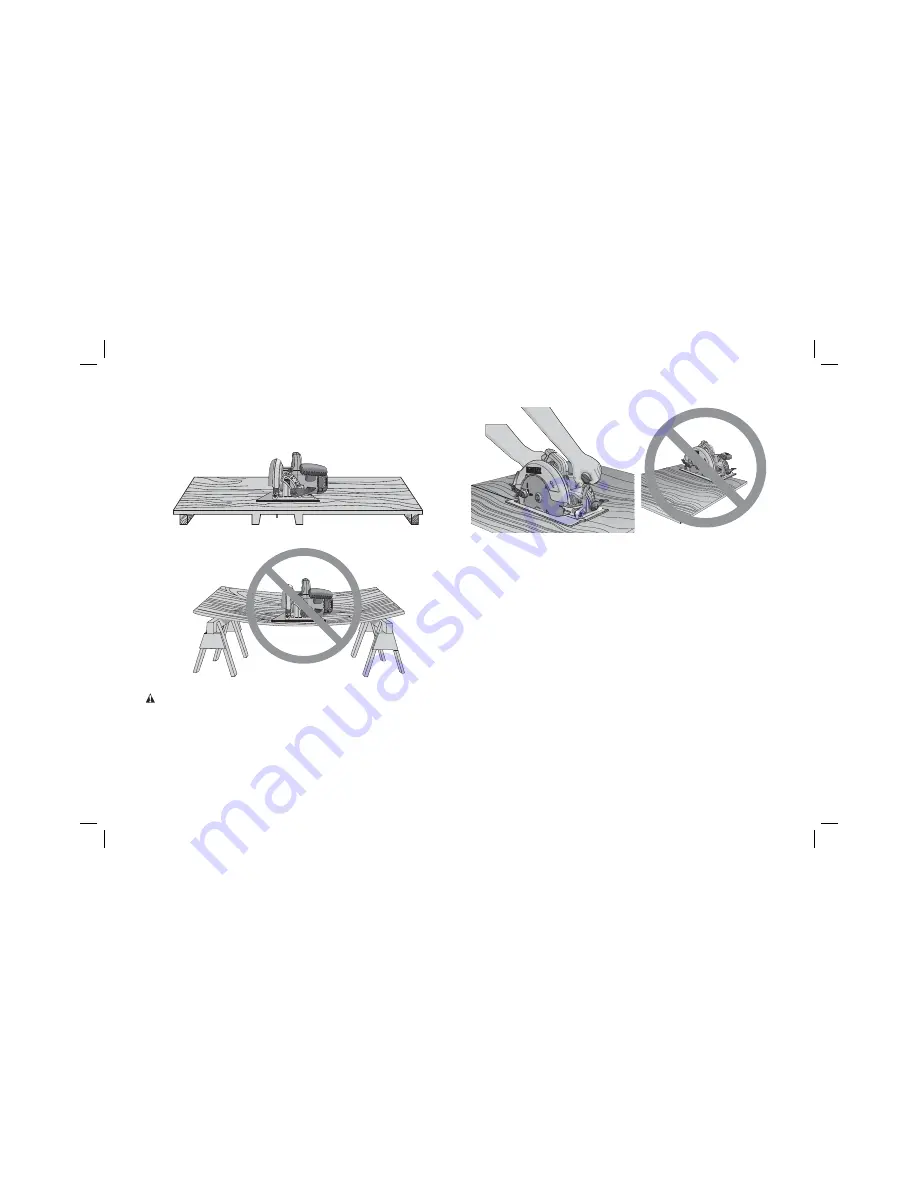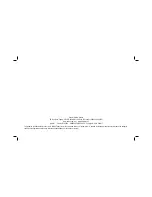
11
ALWAYS DISCONNECT SAW BEFORE MAKING ANY ADJUST MENTS! Place the work
with its “good” side—the one on which appearance is most important—down. The
saw cuts upward, so any splintering will be on the work face that is up when you
saw it.
FIG. 16
FIG. 17
Cutting
WARNING:
Never attempt to use this tool by resting it upside down on a work
surface and bringing the material to the tool. Always securely clamp the workpiece
and bring the tool to the workpiece, securely holding the tool with two hands as
shown in Figure 18.
Place the wider portion of the saw foot plate on that part of the work piece which
is solidly supported, not on the section that will fall off when the cut is made.
As examples, Figure 18 illustrates the RIGHT way to cut off the end of a board.
Always clamp work. Don’t try to hold short pieces by hand! Remember to support
cantilevered and overhanging material. Use caution when sawing material from below.
FIG. 18
FIG. 19
Be sure saw is up to full speed before blade contacts material to be cut. Starting saw with
blade against material to be cut or pushed forward into kerf can result in kickback. Push
the saw forward at a speed which allows the blade to cut without laboring. Hardness and
toughness can vary even in the same piece of material, and knotty or damp sections can
put a heavy load on the saw. When this happens, push the saw more slowly, but hard
enough to keep working without much decrease in speed. Forcing the saw can cause
rough cuts, inaccuracy, kickback, and over-heating of the motor. Should your cut begin to
go off the line, don’t try to force it back on. Release the switch and allow blade to come to
a complete stop. Then you can withdraw the saw, sight anew, and start a new cut slightly
inside the wrong one. In any event, withdraw the saw if you must shift the cut. Forcing a
correction inside the cut can stall the saw and lead to kickback.
IF SAW STALLS, RELEASE THE TRIGGER AND BACK THE SAW UNTIL IT IS LOOSE.
BE SURE BLADE IS STRAIGHT IN THE CUT AND CLEAR OF THE CUTTING EDGE
BEFORE RESTARTING.
As you finish a cut, release the trigger and allow the blade to stop before lifting the
saw from the work. As you lift the saw, the spring-tensioned telescoping guard will
automatically close under the blade. Remember the blade is exposed until this occurs.
Never reach under the work for any reason. When you have to retract the telescoping
guard manually (as is necessary for starting pocket cuts) always use the retracting
lever.
NOTE:
When cutting thin strips, be careful to ensure that small cutoff pieces don’t
hang up on inside of lower guard.
Summary of Contents for DWE560-XE
Page 1: ...DWE560 XE DWE565 XE 184 mm 7 1 4 CIRCULAR SAW INSTRUCTION MANUAL ...
Page 2: ......
Page 17: ......
Page 18: ......
Page 19: ......






































